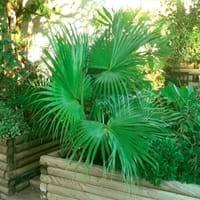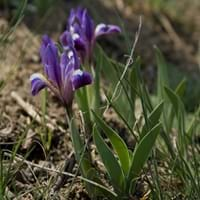Life Span
Perennial
Perennial
Type
Palm or Cycad
Perennial
Origin
United States, Southeastern United States, South-Central United States
World, Pandemic, North America, Europe, Africa, Asia
Types
Not Available
Alizes
Bumblebee Deelite
Maui Moonlight
Langport Wren
Sarah Taylor
Titan's Glory
Thornbird
Jane Phillips
Orinoco Flow
Habitat
Floodplains, Lowland, River side, Swamps
gardens, Hillside, Riverbanks, Warmer regions, Wet forest
USDA Hardiness Zone
7-12
Not Available
Sunset Zone
H1, H2, 3b, 4, 5, 6, 7, 8, 9, 12, 13, 14, 15, 16, 17, 19, 21, 22, 23, 24
Not Available
Habit
Clump-Forming
Clump-Forming
Minimum Height
Not Available
Minimum Width
Not Available
Flower Color
Ivory
White, Yellow, Blue, Purple, Orange, Pink, Rose, Coral, Peach, Burgundy, Lavender, Plum, Orange Red, Dark Salmon, Bronze, Chocolate, Black
Flower Color Modifier
Bicolor
Bicolor
Fruit Color
Chocolate, Black
Not Available
Leaf Color in Spring
Green, Gray Green, Dark Green
Not Available
Leaf Color in Summer
Gray Green, Dark Green
Not Available
Leaf Color in Fall
Green, Gray Green, Dark Green
Not Available
Leaf Color in Winter
Olive, Gray Green, Dark Green
Light Green
Leaf Shape
Circular, dissected, long and linear
Long Linear
Plant Season
Spring, Summer, Fall, Winter
Not Available
Sunlight
Full Sun, Partial Sun, Partial shade
Full Sun, Partial Sun
Type of Soil
Clay, Loam, Sand
Clay, Loam, Sand
The pH of Soil
Acidic, Neutral, Alkaline
Acidic, Neutral, Alkaline
Soil Drainage
Poorly Drained
Well drained
Bloom Time
Early Summer
Not Available
Tolerances
Wet Site, Salt
Drought
Where to Plant?
Container, Ground
Ground, Pot
How to Plant?
Seedlings, Stem Planting
From Rhizomes, Stem Planting
Plant Maintenance
Medium
Medium
Watering Requirements
Do Not over Water, Never Over-water, Requires regular watering, Requires watering in the growing season
Does not require lot of watering, Keep ground moist, Water when soil is dry
In Summer
Lots of watering
Lots of watering
In Spring
Moderate
Moderate
In Winter
Average Water
Average Water
Soil pH
Acidic, Neutral, Alkaline
Acidic, Neutral, Alkaline
Soil Type
Clay, Loam, Sand
Clay, Loam, Sand
Soil Drainage Capacity
Poorly Drained
Well drained
Sun Exposure
Full Sun, Partial Sun, Partial shade
Full Sun, Partial Sun
Pruning
Remove damaged leaves, Remove dead leaves
Remove dead leaves, Remove dead or diseased plant parts, Requires very little pruning
Fertilizers
fertilize every 2-3 weeks while growing
All-Purpose Liquid Fertilizer
Pests and Diseases
Insects
Bacterial Diseases, Fungal Diseases, Viruses
Plant Tolerance
Drought
Drought
Flowers
Insignificant
Yes
Flower Petal Number
Single
Single
Foliage Texture
Bold
Medium
Foliage Sheen
Matte
Matte
Attracts
Birds
Bees, Butterflies
Allergy
Avoid during Pregnancy
Asthma
Aesthetic Uses
Beautification, Landscape Designing, Showy Purposes
Beautification, Showy Purposes
Beauty Benefits
Not Available
Not Available
Environmental Uses
Air purification, Food for insects, Prevent Soil Erosion
Air purification
Medicinal Uses
Asthma, Baldness, Cold, Cough, Migraines, Sore throat
No Medicinal Use
Part of Plant Used
Whole plant
Flowers, Leaves, Rhizomes, Root
Other Uses
Decoration Purposes, Employed in herbal medicine, Showy Purposes, Used as Ornamental plant, Used for its medicinal properties
Making Perfumes, Oil is used for aromatherapy, Used as a sedative, Used as essential oil
Used As Indoor Plant
Yes
No
Used As Outdoor Plant
Yes
Yes
Garden Design
Bog Garden, Feature Plant, Foundation, Hedges, Mixed Border, Tropical
Bedding Plant, Cutflower, Mixed Border, Rock Garden, Wall
Botanical Name
SABAL minor
IRIS
Common Name
Bush Palmetto, Dwarf Palmetto, Little Blue Stem, Swamp Palmetto
Iris
In Hindi
बौना पल्मेट्टो
Iris
In German
Zwerg Palmetto
Iris
In French
Palmetto nain
Iris
In Spanish
Palmetto enano
Iris
In Greek
Νάνος Palmetto
Ίρις
In Portuguese
Palmetto anão
Íris
In Polish
Dwarf Palmetto
Irys
In Latin
Pumilio Palmetto
Iris
Phylum
Magnoliophyta
Tracheophyta
Class
Liliopsida
Liliopsida
Order
Arecales
Asparagales
Family
Arecaceae
Iridaceae
Clade
Angiosperms, Commelinids, Monocots
Angiosperms, Monocots
Tribe
Not Available
Irideae
Subfamily
Coryphoideae
Iridoideae
Season and Care of Dwarf Palmetto and Iris
Season and care of Dwarf Palmetto and Iris is important to know. While considering everything about Dwarf Palmetto and Iris Care, growing season is an essential factor. Dwarf Palmetto season is Spring, Summer, Fall and Winter and Iris season is Spring, Summer, Fall and Winter. The type of soil for Dwarf Palmetto is Clay, Loam, Sand and for Iris is Clay, Loam, Sand while the PH of soil for Dwarf Palmetto is Acidic, Neutral, Alkaline and for Iris is Acidic, Neutral, Alkaline.
Dwarf Palmetto and Iris Physical Information
Dwarf Palmetto and Iris physical information is very important for comparison. Dwarf Palmetto height is 240.00 cm and width 240.00 cm whereas Iris height is Not Available and width Not Available. The color specification of Dwarf Palmetto and Iris are as follows:
Dwarf Palmetto flower color: Ivory
Dwarf Palmetto leaf color: Green, Gray Green and Dark Green
Iris flower color: White, Yellow, Blue, Purple, Orange, Pink, Rose, Coral, Peach, Burgundy, Lavender, Plum, Orange Red, Dark Salmon, Bronze, Chocolate and Black
- Iris leaf color: Not Available
Care of Dwarf Palmetto and Iris
Care of Dwarf Palmetto and Iris include pruning, fertilizers, watering etc. Dwarf Palmetto pruning is done Remove damaged leaves and Remove dead leaves and Iris pruning is done Remove dead leaves, Remove dead or diseased plant parts and Requires very little pruning. In summer Dwarf Palmetto needs Lots of watering and in winter, it needs Average Water. Whereas, in summer Iris needs Lots of watering and in winter, it needs Average Water.





